Timely issue: When, if ever, could shot clocks come to Delaware high school basketball?
The gymnasium at Odessa High School has all of the modern touches you would expect from a sparkling facility that just opened in 2020.
One of them is shot clocks on top of each backboard on the basketball court, presumably installed in anticipation of one day being used by the Ducks who play there.
That day has yet to arrive. And although most Delaware high school basketball coaches surveyed are in favor of adding shot clocks, the Delaware Interscholastic Athletic Association appears to have no sense of urgency in making what would be a fundamental change to the game in the First State.
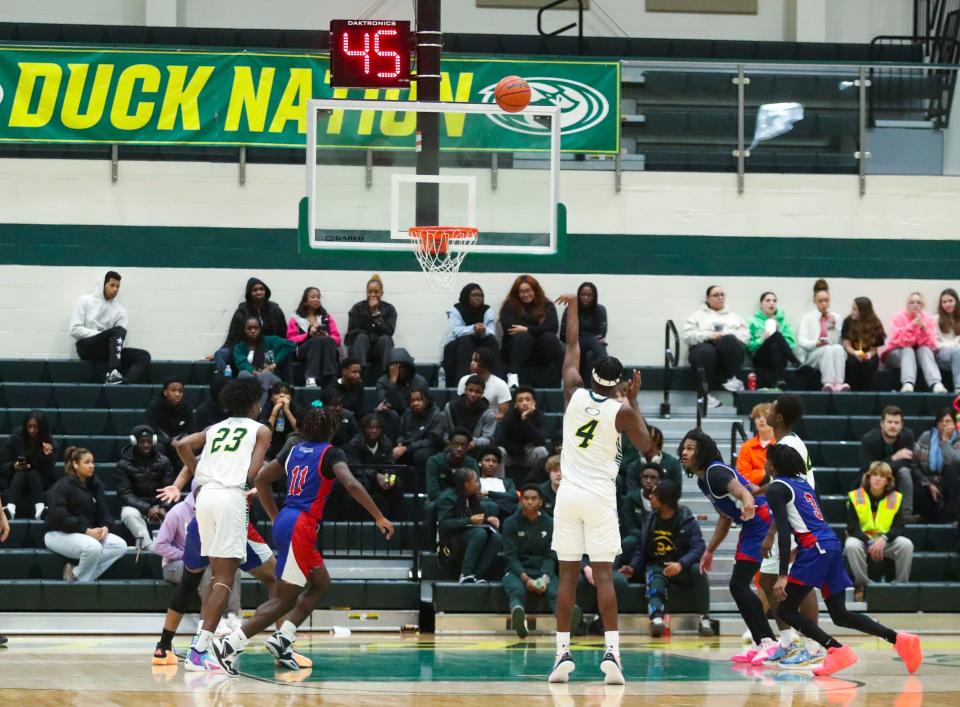
“I don’t think there are a lot of people really pushing it,” DIAA executive director David Baylor said recently. “It seems like the drumbeat gets a little louder as we get closer to tournament time, only because the stakes are a little higher.”
The National Federation of State High School Associations (NFHS) permitted states to institute a 35-second shot clock in high school basketball beginning with the 2022-23 season. But it is optional and must be approved by each state’s athletic association.
Since then, 27 states have added shot clocks, with some even lowering the time to 30 seconds. But when DIAA wraps up its boys and girls basketball tournaments on Saturday, the shot clocks above the backboards at the Carpenter Center – routinely used by the University of Delaware men’s and women’s teams – will remain turned off.
Even if the issue were to make it to the DIAA board and be approved quickly, implementation of shot clocks would take time.
“If we were to get the support for it, and if the board were to pass it, I think it would take about two years to implement,” Baylor said.
Why add shot clocks?
The reason for shot clocks is simple – to speed up the game and end the use of stalling tactics in basketball.
Smyrna boys basketball coach Andrew Mears, president of the Delaware Interscholastic Basketball Coaches Association, said he and most of his fellow coaches are in favor of shot clocks. DIBCA represents both boys and girls basketball coaches throughout the state.
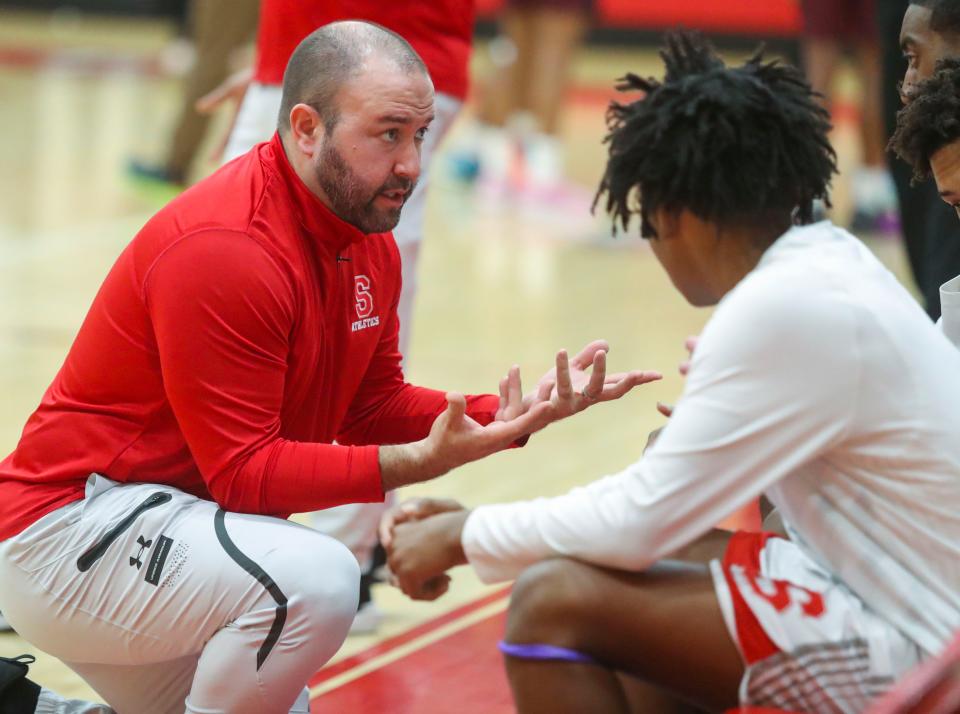
“I think the need for a shot clock has always been there,” Mears said. “Times have changed. I think we’re a little bit behind in that regard.
“I’m hoping at some point, we see a shot clock in Delaware pretty soon. It’s very much overdue. As an association, us coaches have voted that we are in favor of a shot clock.”
Sanford girls coach Marcus Thompson has taken his team to play in neighboring jurisdictions that have added shot clocks – Maryland, the District of Columbia, Virginia, New York and parts of New Jersey.
“We specifically play in tournaments that have a shot clock, so that our girls are prepared,” Thompson said. “If you’re going to the next level and you’ve never played with it, it’s a different game.

“The game is a lot quicker. The defensive intensity is a lot higher, because you know how long you have to play defense.”
Middletown boys coach Azeez Ali has also seen the impact in out-of-state games the Cavaliers played with shot clocks.
“Those games were different. I felt like those games were faster,” Ali said. “I felt like we had to get in our offense faster, we had to get in transition faster, we had sprint back faster. Our execution had to be that much better, because we didn’t have time if we missed a screen to pull it back out and rerun the play.”
How would shot clocks change the game?
Baylor has attended several boys and girls basketball games statewide this year. He said most teams play at a pace fast enough to render shot clocks irrelevant.
“It’s a faster game today than it was several years ago,” Baylor said. “They move the ball around more, and they take shots a lot sooner than I would say 10 or 15 years ago.
“I don’t think there would be many shot-clock violations at all. Based on the games that I’ve seen this year, if you had one shot-clock violation in a game, that would be an anomaly.”
But teams often do hold the ball – sometimes for a minute or more - for a final shot at the end of a quarter, half or game.
“Right now it’s within the rules, so it’s fair,” Ali said. “But I think the shot clock would help with that.”
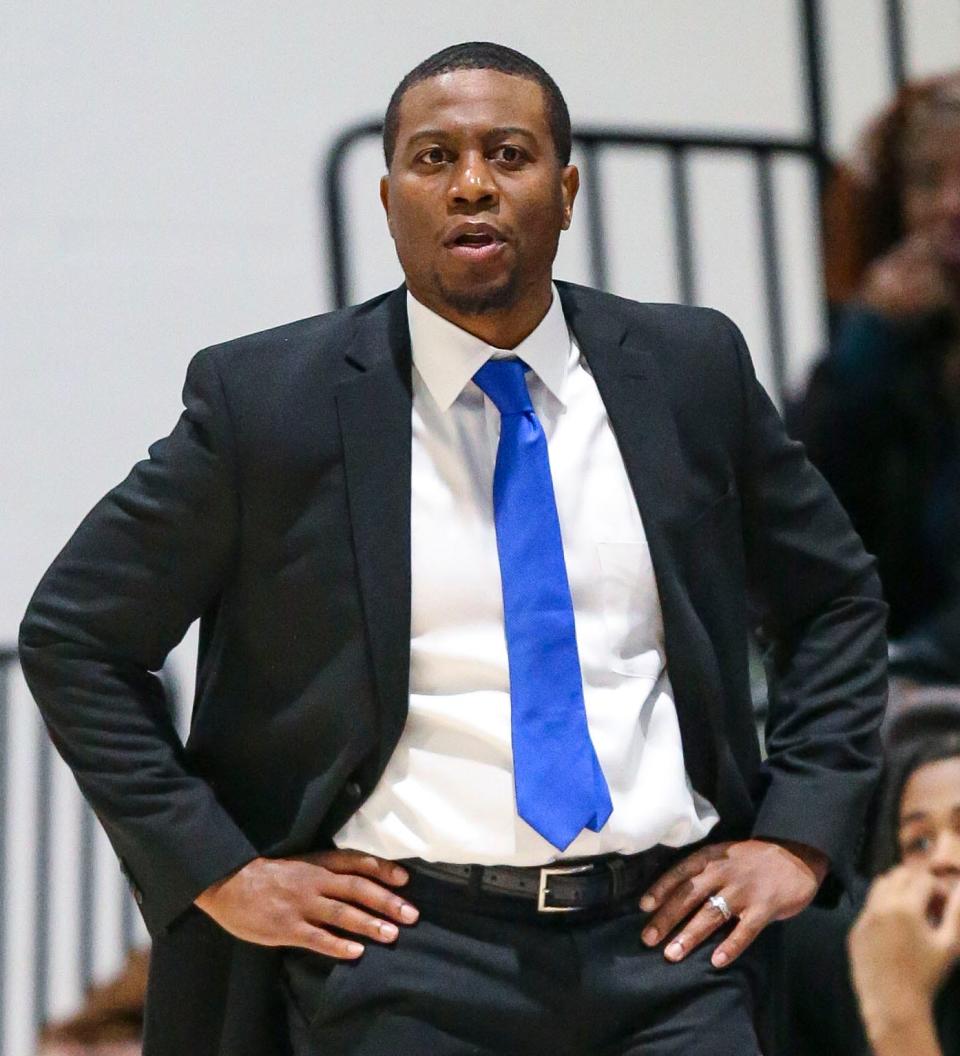
On Feb. 16, when the Sanford boys handed St. Elizabeth its only loss of the season in front of a sellout crowd at the St. E Center, the Warriors passed the ball around for the first 1:04 of the fourth quarter.
When the Vikings’ defense came out to guard a little more closely, Sanford’s Stephen Conway was fouled and hit two free throws to extend the lead to 46-39. Sanford went on to win 58-51.
“They were sitting back,” Warriors coach Khallid Hart said of the St. E defense. “We were up a few points. That’s how basketball is. You make them come out, then you get to play your game.
“You just stay patient and take what the defense gives you. If they want to pack it in, we can sit outside. We had enough points to do that.”
Reasons against shot clocks
But implementing shot clocks would require both initial and ongoing expenses and labor. Those issues have been cited in other states that have yet to add them.
On Jan. 30, the Colorado High School Activities Association’s Legislative Council voted 43-28 to not implement shot clocks for the 2026-27 school year. An amendment to use shot clocks only in varsity games also failed 47-22.
“I’m not opposed to having a shot clock,” Baylor said. “The constant feedback that I get is the cost of getting the equipment for each school, then the training of people to be able to operate the shot clock. Those seem like the two obstacles or challenges.”
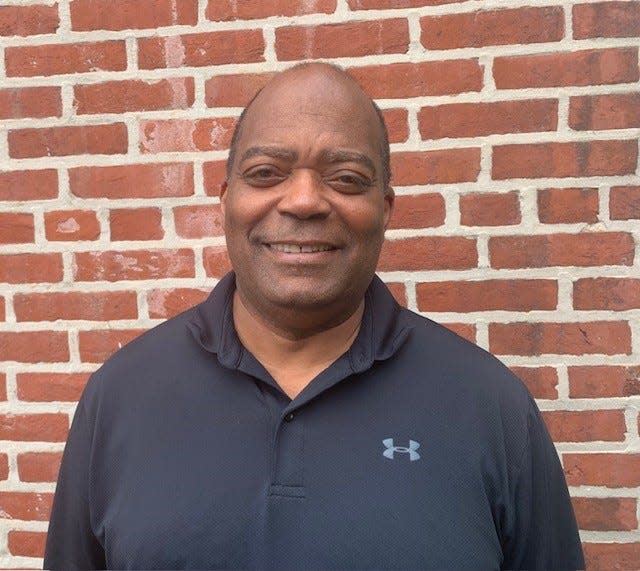
A quick Internet search shows that a set of two shot clocks would likely range from $2,000 to $6,000. Some schools may also pay for installation, although most could be set up by school employees, including coaches or athletic directors.
But the major, ongoing cost would be training and paying for a person to operate the shot clocks at each home game.
Currently, schools pay one person to operate the scoreboard during games. A shot-clock operator would double those costs.
St. Georges athletic director John Wilson said he pays $18 per hour, usually for 2½ hours per game, for a scoreboard operator.
Jeremy Jeanne, athletic director and girls basketball coach at Delaware Military Academy, said he typically pays a scoreboard operator $50 per game.
A school with full varsity and junior varsity schedules and some freshmen games in both boys and girls basketball can host up to 50 games in a season. At $50 per game, adding a shot-clock operator could add $2,500 to the annual athletic budget.
“Finding someone consistently who could work the clock would be the biggest expense,” Jeanne said. “Every school system is different, every district is different in terms of paying someone for each position. But that’s an ongoing expense that you would have, and we’re talking about not just varsity, but sub-varsity as well.”
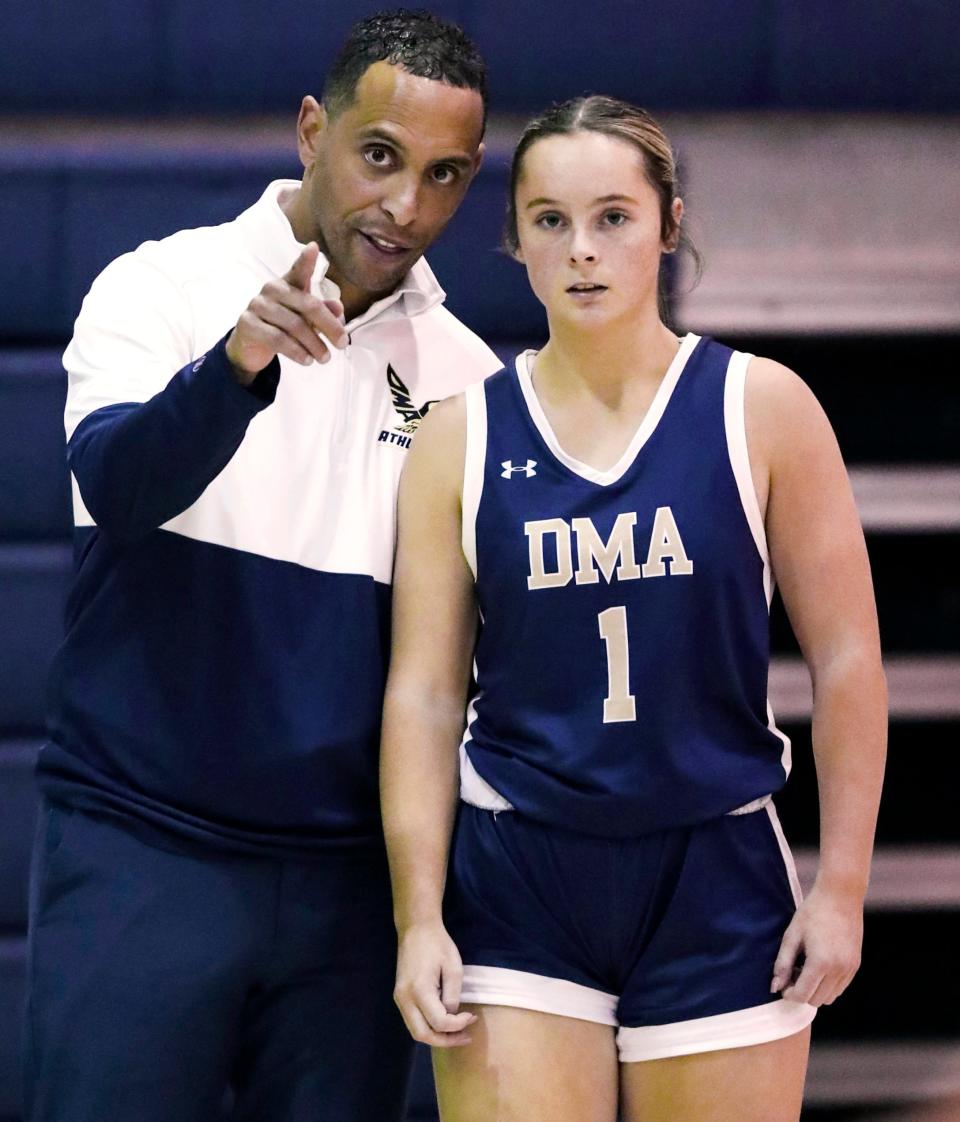
The other major issue is each school finding a person – or people – willing to be trained and operate the shot clocks correctly for many days and nights throughout the winter months.
“It’s just being able to find the manpower, and training them,” Jeanne said. “Is it going to be the same person doing it every game? If so, then you’re in a good spot. But then in one game, you don’t have that person that is trained, that knows how to do it, you have to find someone and train them quickly.”
That is also a concern for Wilson.
“Our gate goes to our district, so I’m not sure how we would pay for someone to run the shot clock,” the St. Georges AD said. “To find a worker is tough. To do a clock, you’ve got to find two people.”
Keeping up with the game and the referees’ signals and instructions is not as easy as it may look to some.
“I’ve had to sub in for the clock,” Wilson said. “It’s fast paced. You have to be on it. It can be nerve-wracking at times if you’re not used to it.”
Still, he would be willing to do what it takes to add shot clocks.
“It would be a challenge,” Wilson said. “But everything comes with change, and you’ve got to adapt to change or be left behind. It’s something that probably needs to be done to help these kids get used to the next level.”
The DIAA executive director believes shot clocks will need universal support to be added.
“The commitment is going to be significant for each school,” Baylor said. “Let’s face it, there are some schools that don’t get a lot of fan support, and this would be an additional cost for them. So I think we have to be careful in how we move toward this. It has to be a commitment from all of the schools. You can’t have some schools doing it and some schools not.”
When, if ever, could shot clocks be added?
But coaches and administrators believe that given the current issues facing Delaware high school sports, shot clocks could be an uphill climb.
“I know DIAA right now is dealing with bigger issues, with transfers, NIL and transgender issues,” Jeanne said.
Coaches associations in other sports have seen some proposed rules changes approved easily by the DIAA board in the past. But Mears knows that given the expense involved, adding shot clocks could be a heavy lift.
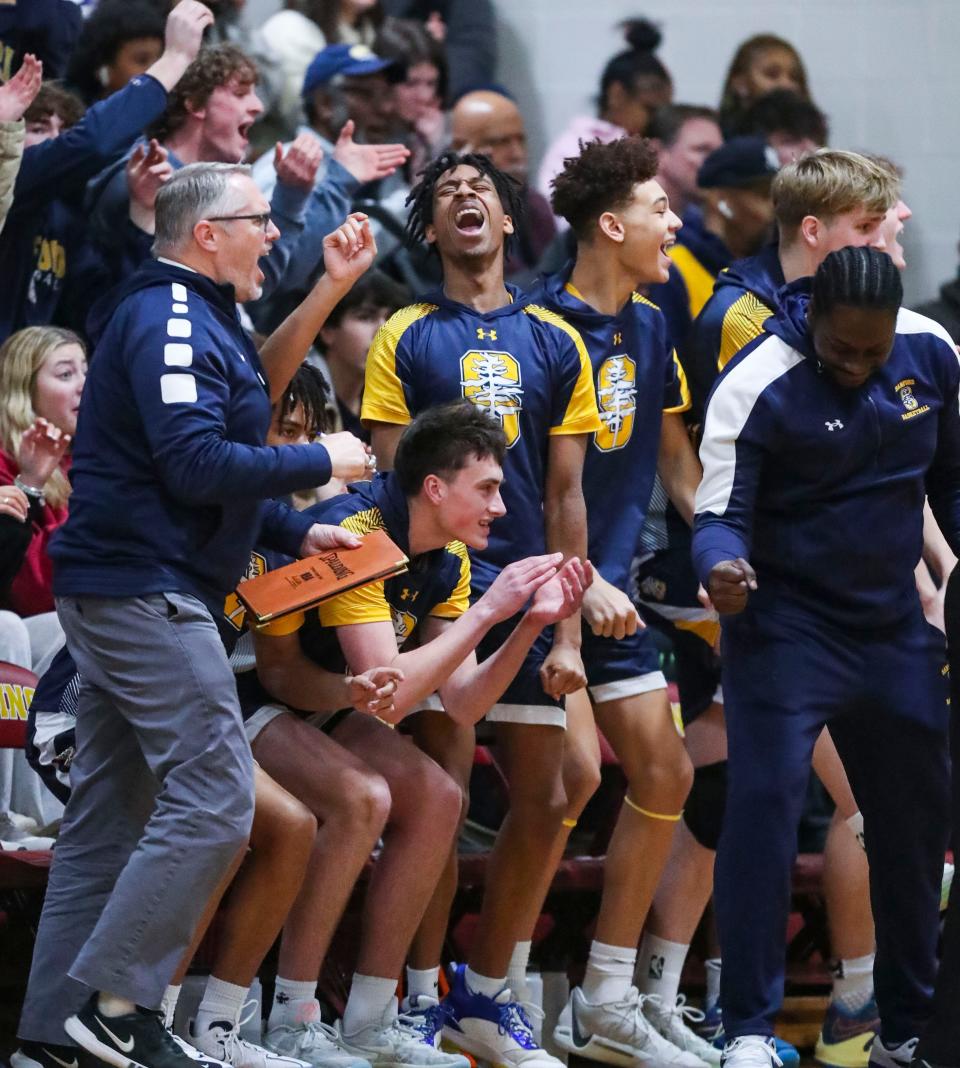
“Our DIBCA association can be a voice, but we are not decision makers,” the DIBCA president said. “Hopefully, between the athletic directors and DIAA board, I’m not sure where that is on their priority list but I would love to see a shot clock in Delaware.
“We haven’t proposed it. We have only expressed our interest in it and our support for it. We haven’t heard anything back, one way or another.”
Since shot clocks have long been a part of the game in college and the NBA and WNBA, some argue that adding them would help Delaware high school players prepare for those higher levels.
“Some of the coaches that have recently spoken to me about it feel that our student-athletes are at a disadvantage when they go to the next level, not playing with the shot clock,” Baylor said. “I don’t know what the pros or cons on that are. My only argument on that is if other states are using a shot clock, I think it’s time we look at how competitive we are.”
How would that happen?
“The coaches’ association would bring it to the DIAA,” Baylor said. “Then we would engage the conference presidents to make sure a majority of the ADs are supportive of it. We would flesh it out, then bring it to the board for a vote.”
And if the board approved, how soon could we see shot clocks?
“I think at the earliest, you’re looking at the 2025-26 season to do that,” Baylor said. “Getting equipment in all the schools, getting people trained, getting the kids to practice with the equipment. There are things that you have to think about before just going right into it.”
Mears, the DIBCA president, believes most coaches would love to see it.
“I think it would be fitting for us,” Mears said. “It would raise the level of coaching. Also raise the level of our IQ of our athletes and best prepare them for the scholarships that they’re fighting for.”
Contact Brad Myers at bmyers@delawareonline.com. Follow on X (aka Twitter): @BradMyersTNJ
This article originally appeared on Delaware News Journal: Delaware high school basketball coaches want shot clocks to be added
